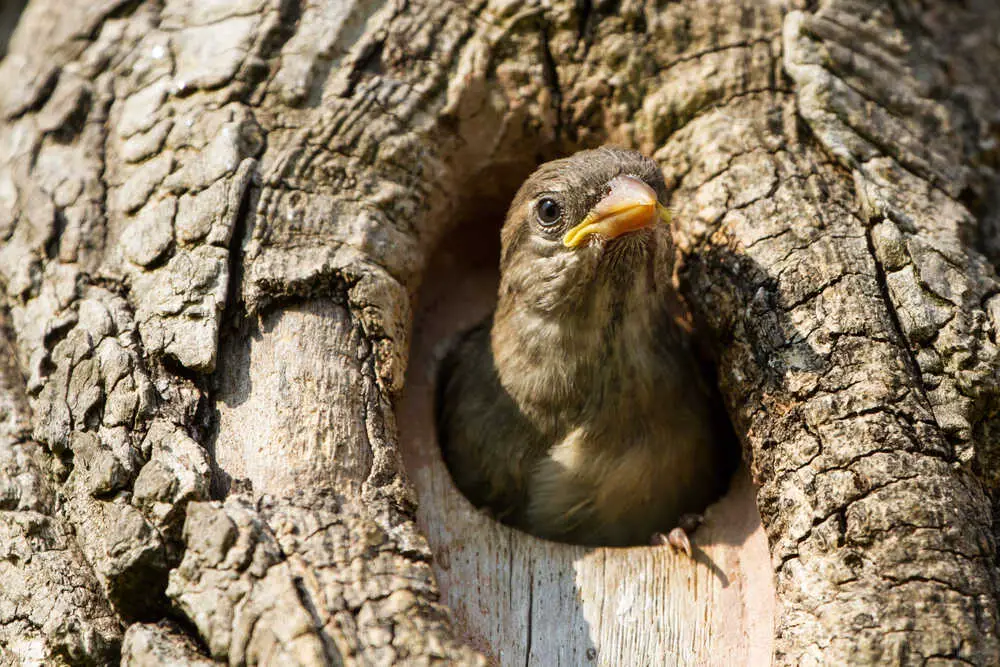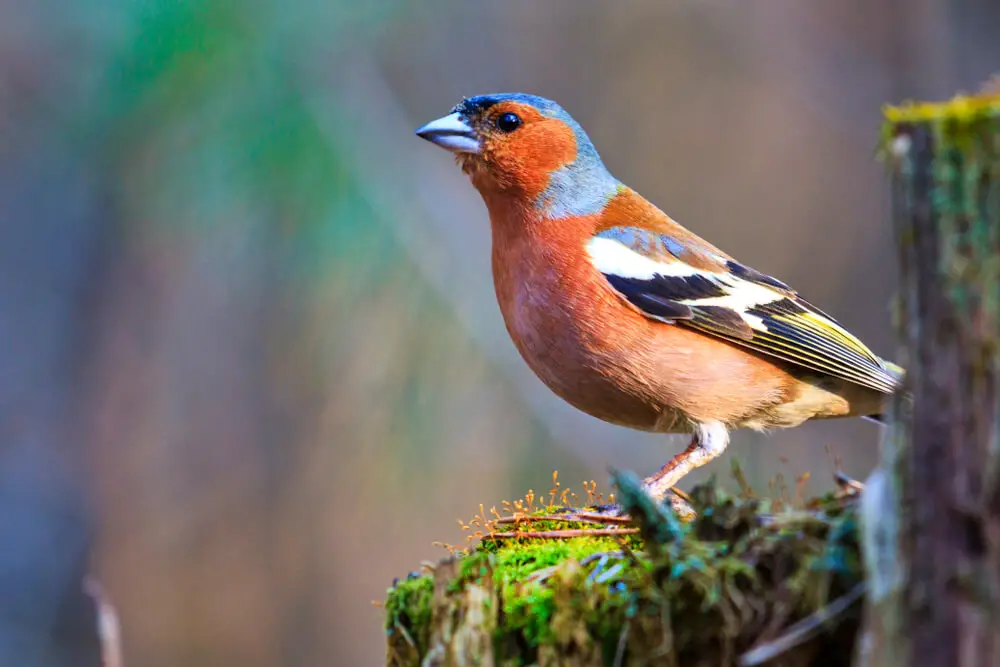It’s days like today, wet, windy, and cold, that makes me feel sorry for our feathered friends.
The wind has just blown my half-filled wheelie bin over, and that was in a semi-sheltered place.
My poor garden visitors mustn’t stand a chance!
I got to thinking; looking into the garden and beyond, I can’t see or hear any birds.
Where do birds shelter during storms; how do they make it through the foulest weather?
Table of Contents
Where do Birds Shelter During Storms?
Birds cleverly sense when a storm is incoming and prepare for it.
Cavity nesters huddle inside and wait for the storm to pass. Those that build robust nests in sheltered spaces gather in clusters to share body heat.
If they deem their nest not strong enough, they perch in trees, hedges, and bushes until the worst is over.
Some birds get ahead of particularly bad storms and fly across the miles to keep safe, only to return the weather improves.
Places of Safety for Garden Birds
If the birds sense an incoming storm, more about that later; how they protect themselves depends on how they usually nest.

Cavity Nesters
Cavity nesting birds nest in holes in trees and bushes, outbuildings, stone formations, muddy banks and verges.
Some species, such as the woodpecker, excavate their own holes. Others use naturally formed cavities, and some look for a ready-made cavity abandoned by another bird.
Cavity nesting birds are usually happy to use nesting boxes, provided they are positioned at the correct height in secure places.
Coal, great, and blue tits, house sparrows, robins, wagtails, pied flycatchers, nuthatches, and wrens are typical cavity-nesting birds that return to their place of safety during a storm.
When they sense an impending storm, birds search for extra bedding material to further insulate the hole or box. They use moss, fur, dry lichen, feathers, twigs, anything that waterproofs and adds stability against winds.
They also forage for as much food as possible to build their fat reserves as the storm’s duration is unknown.
They huddle together until the storm passes. Wrens gather in large numbers to share body heat; they understand safety in numbers.
Nesting Birds
Bird with loose structures for nests knows that they and the nest will perish in powerful winds.
They also forage for food before storms hit; they need to store as much energy as possible – in case it is prolonged.
They head to the centre of large hedges and bushes for safety. Some fly into trees and stay close to the trunk for added protection. Dense thickets and beneath garden sheds are other good hiding places.
These perching birds use minimal effort to grip the branch tightly. They can sense the changing direction of the wind, moving around the tree so that the trunk provides a defence.
Some birds attempt to get ahead of the storm, flying many miles to safety. It is usually seasonal migrants that attempts this, those without eggs or young to care for.
Most return once the danger is over, although some get lost. It is one of the reasons we occasionally spot non-native birds in the least expected places.
How Perching Birds Keep Their Grip in High Winds
Passerines – birds that perch have feet designed to grip branches when they roost or during storms.
Typically, most birds have 4 toes, one of which faces the opposite way. It is called the hallux and contributes to the vice-like grip.
Bird’s legs contain a series of tendons that contract when they land on a surface. The toes clasp the branch and don’t relax their grip until the bird wakens and attempt to stretch their legs.
Perching on Cold, Icy Branches
Birds use the same system to perch in wintry conditions, even during a frost.
There are a limited number of nerves, blood vessels, and muscles in bird’s feet. Although not totally de-sensitised, they don’t feel cold as much as humans.
We use the entire sole of our feet to stand; birds rely on their toes.
In very cold weather, they fluff up their belly feathers, it keeps their body warm and covers their exposed feet.

How Birds Know when a Storm is Coming
It is a little short of miraculous that a tiny garden bird can recognise the signs of bad weather and head for safety.
There is a scientific explanation that is still amazing.
Natural events occur at the first signs of a storm. Waves crash harder onto the shore and volcanoes begin to rumble as an early warning sign of a powerful weather front. It causes the barometric pressure to alter.
These events create sound waves called infrasoundwith a low frequency of just 20Hz.
It cannot be detected by human ears, but our friends, the garden birds, that’s a different matter.
They can sense infrasound from up to 250-500miles away and sense in which direction it is travelling.
Birds assess whether their place of safety is secure enough or begin a journey to avoid the storm before it hits.
The power and speed of the storm influence the direction of their travel.
The Severity of the Storm Determines the Birds’ Actions
Because birds have a sixth sense, they understand when a storm will hit and how bad it will be.
I know I have readers from around the world. Just because you might be sitting in leafy middle England, it doesn’t mean someone out there isn’t interested in where the birds go when hurricanes and tornadoes strike.
On very windy days, the birds use the thermals and aerodynamic skills to fly.
Occasionally, they may blow off course, sometimes resulting in non-native birds being spotted in unusual places.
Their ‘ spidey-senses’ are reliable enough to know if it is safe to fly, or not.
It is prior to a gale that birds find the most secure roosting places to hide.
Hurricanes and tornados are infrequent occurrences in the UK. Sadly, small garden birds rarely survive these extreme conditions; unless they have managed to get ahead of the incoming.
How to Help the Birds After a Storm
If the storm has been particularly harsh, we should expect the birds to be a little battered and bruised and most of all, hungry.
Here are a few handy tips to give them a helping hand;
- Fill the feeders with plenty of high-energy food. Suet is always good, along with sunflower hearts and mealworms. Don’t forget about the ground-feeders.
- They need some fresh water to drink and bathe in. Give the baths a rinse before adding fresh water.
- Repair or replace broken bird tables as they may be reliant on them for the first few days post-storm.
- Look for injured birds. You might have a rehab centre close by to offer help. Otherwise, offer them a place of safety with little intrusion. Leave food and water close by and keep everything crossed.
Conclusion
Birds are hardy and resilient creatures that adapt to almost any climate Mother Nature throws their way.
Their ability to sense the downward turn in the weather before it actually hits gives them an advantage in finding shelter during a storm.
Whether they huddle in holes and boxes for safety or cling to branches for dear life, most hopefully, come out alive.

Thanks Walter – I have been wondering the same thing!
Thank you for answering a question I have been worrying about so much.
I think some birds prefer nicer weather than cold windy weather
Or like maybe storms like thunderstorms